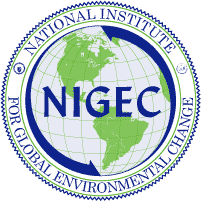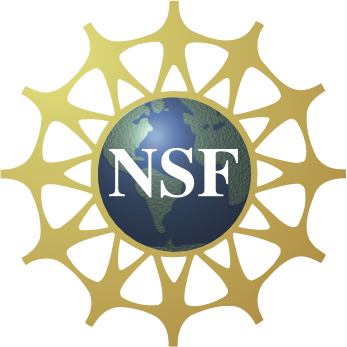TG How Was GSS Created?

{ GSS Teacher Guide Index } { All GSS Books }
The driving force for new interdisciplinary courses came from the science education reform movement that has been gathering momentum in the early 1990s. But until recently, few materials had been published to help teachers break out of the traditional mold. Consequently, many teachers were asked to spend their summer months “writing a new course on global change.” The thought of thousands of teachers around the country laboring in isolation to create their own courses, when they had so much to learn from each other, gave rise to Global Systems Science (GSS) —a course created by the collaboration of teachers, scientists, and experienced curriculum developers at the Lawrence Hall of Science in Berkeley.

Development of the GSS materials started in 1990, when we were awarded a grant from the National Institute for Global Environmental Change (NIGEC), with funds from the U.S. Department of Energy, to develop a preliminary version of a high school course. But Global Systems Science would never have become a stimulating and informative course for students were it not for the creative and critical efforts of more than 150 teachers who worked on it between 1991 and 1995.

We started by sending preliminary drafts of the Student Guides and laboratory activities to teachers for their review. Later on we were awarded a grant from the National Science Foundation to provide provided full classroom sets of the Student Books so that teachers could try them with their students, then come to Berkeley for three weeks to provide feedback and create new activities. Other teachers, who were not able to come to Berkeley, tested the units with their students and sent us their feedback in the mail. We are indebted to all of these teachers and their students for helping to make Global Systems Science both interesting and practical for classroom use.
The fate of our first Student Book illustrates the important formative role played by teachers. GSS Volume 1, weighing in at 134 pages, was intended to be the first of five books in the GSS series. It was reviewed by 25 teachers, parents, students, and administrators, then revised before being sent out to another 25 teachers for testing with their students.
When the trial test teachers came to Berkeley, we received the news: On the plus side, the students really enjoyed learning about something that was really important—how humans may be affecting the climate of our entire planet. The material was readable and the students enjoyed most of the illustrations and all of the activities. On the other hand, the teachers recommended the following changes:
- Change the title. The original title, A Planet Under Siege, seemed to tell the students what to think. The whole topic of global warming and the greenhouse effect is controversial and we wanted the students to make up their own minds about it. Some scientists even predict that we are entering another ice age. We modified the title to the more neutral phrase, Changing Climate.
- Shorten the books. The teachers strongly preferred shorter books that they could use in any order they chose. So, we changed the concept of the series from five volumes to be used consecutively, to nine short Student Guides, each under 100 pages, that could be used in any order.
- Put most of the activities into the Teacher’s Guide. Although text materials are important, the most vivid and meaningful way to communicate concepts to students is through activities, including laboratory experiments, simulations, games, and role play scenarios. Each Student Guide includes at least two laboratory activities, and the Teacher’s Guide includes ideas for many others.
- Do not include a glossary. There was considerable debate about this during every GSS Summer Institute. Glossaries seemed to emphasize memorizing the definitions of words over conceptual understanding. On the other hand, it seemed necessary to use certain words that we could not assume students already knew. We compromised by embedding definitions in the text, and highlighting these in italics, so that students would know that they were definitions.
- Do not include questions at the ends of the chapters. This issue was also hotly debated during the Summer Institutes. A problem with questions in the text is that some students skim through the material to answer the questions, rather than trying to grasp the big picture. Yet in certain places, questions are valuable to get the students to think about what they are reading. So, we embedded some questions in the text, highlighting these in italics, and included other questions in the Teacher’s Guide.
These are just a few of the hundreds of individual changes recommended by teachers. Even more important are the many ideas for activities, assessment tasks, and resource materials that have become integral parts of the GSS program.
Scientists were involved in the development of the materials at several levels. Discussions with scientists (such as Arthur Rosenfeld at the Lawrence Berkeley National Laboratory, Stephen Schneider, now a professor in the Department of Biological Sciences at Stanford University, and Vic Mayer, Professor of Science Education, Geology, and Natural Resources at Ohio State University) helped to formulate the basic principles behind the GSS course in its early stages. Writings by scientists helped us map out the territory of Global Systems Science Student Guides, and write the first drafts of the course. Interviews with scientists provided valuable information about their research, as well as information about scientists and technicians as role models. Several scientists presented talks and conducted tours of their laboratories during the GSS Summer Institutes, leading to new activities by the institute participants. Scientists also reviewed the trial editions of the Student Guides, providing a check on the accuracy of the materials.
And finally, the full-time curriculum developers on the staff brought to the project decades of experience in formulating, testing, and revising educational materials that stimulate students’ interests and that really work in the classroom. All of the curriculum developers, teachers, and scientists who worked on the project are acknowledged on the following pages.
Unlike some areas of science, such as classical physics, which are widely accepted by virtually all scientists, the results and conclusions of global systems science are constantly changing as new research studies resolve burning issues and raise new questions. The course materials must change in response to these new developments if it is to stay current; so, stay tuned for updates!
Additionally, we are open to suggestions from teachers about new activities and teaching methods. If you have suggestions for improving the GSS course materials, please send them to: gssmail@berkeley.edu. We look forward to hearing from you!
